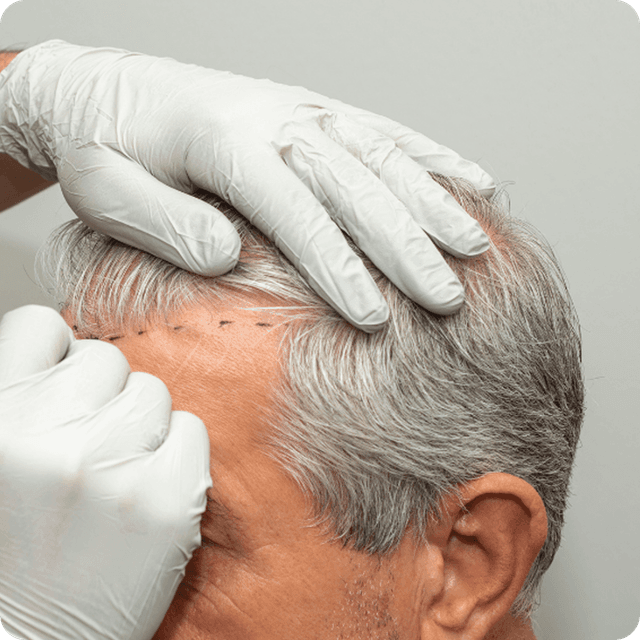
Platelet-Rich Plasma (PRP) Therapy is a revolutionary, minimally invasive treatment that uses your own blood to stimulate hair growth and enhance the health of your scalp. PRP Therapy has been proven to be one of the most effective treatments for hair loss and thinning hair, offering a safe, autologous and long-lasting solution for both men and women.
PRP Therapy is a non-invasive treatment that involves drawing 10-20ml of blood from your body, processing it in a centrifuge to concentrate the platelet-rich plasma, and then re-injecting it into your scalp. The plasma is rich in growth factors and bioactive proteins, which help stimulate hair follicles, regenerate scalp tissue, and promote new hair growth.
PRP is a concentration of your own platelets and growth factors which are essential for healing, and when injected into the scalp, they promote the activation of dormant hair follicles, leading to thicker, healthier hair. PRP Therapy can be used to treat androgenetic alopecia, female pattern baldness, and other types of hair loss.

PRP Therapy is suitable for both men and women who are experiencing hair thinning or hair loss. It is most effective for individuals in the early stages of hair loss, but can also benefit those who have been experiencing hair thinning for a longer period of time.

Advantages of PRP Therapy (Platelet-Rich Plasma Therapy) procedure include:
Since PRP uses your own blood, there is no risk of allergic reactions or side effects. It is a safe, non-surgical, and minimally invasive procedure with no downtime.
PRP helps stimulate dormant hair follicles and promotes the growth of new, stronger hair. It is particularly effective for individuals with early-stage hair loss.
PRP helps increase hair density and volume, creating a fuller, thicker head of hair by increasing the blood supply to the follicles through angiogenesis
By revitalizing hair follicles, PRP can help reduce hair shedding and maintain the health of existing hair.
PRP therapy has minimal risks and side effects. Most patients experience only temporary swelling, tenderness or redness at the injection site, which resolves quickly.
 Step 1
Step 1During your consultation, a medical professional will assess your scalp and discuss your hair concerns to determine if PRP is right for you. Your medical history is also assessed to ensure that PRP therapy is a safe option.
 Step 2
Step 2A small amount of blood (about 10-20 mL) is drawn from your arm. This amount is similar to a typical blood test and is not painful
 Step 3
Step 3The blood sample is placed into a centrifuge, which spins the blood at high speed to separate the blood components. The centrifuge isolates the platelet-rich plasma from the red blood cells and other components, concentrating the growth factors and proteins.
 Step 4
Step 4The PRP is then injected into the scalp using fine needles, targeting areas where hair thinning or loss is present. The procedure is relatively quick and typically takes 30-45 minutes.
 Step 5
Step 5After the procedure, you can resume your daily activities immediately. There is no downtime, though you may experience some mild swelling or tenderness at the injection sites, which typically resolves within a day or two.
At Kibo, we are dedicated to delivering personalized care and effective results.

Kibo also provides comprehensive aftercare support to ensure the best possible outcome.

The cost of PRP Therapy depends on the number of sessions required, the expertise of the medical practitioner, and whether it is a part of the comprehensive treatment plan. At Kibo, we offer transparent pricing and tailored plans based on your specific needs.
A consultation is the best way to determine the cost of your PRP therapy plan.
YOUR HAIR JOURNEY STARTS HERE